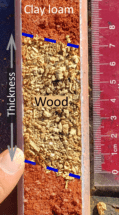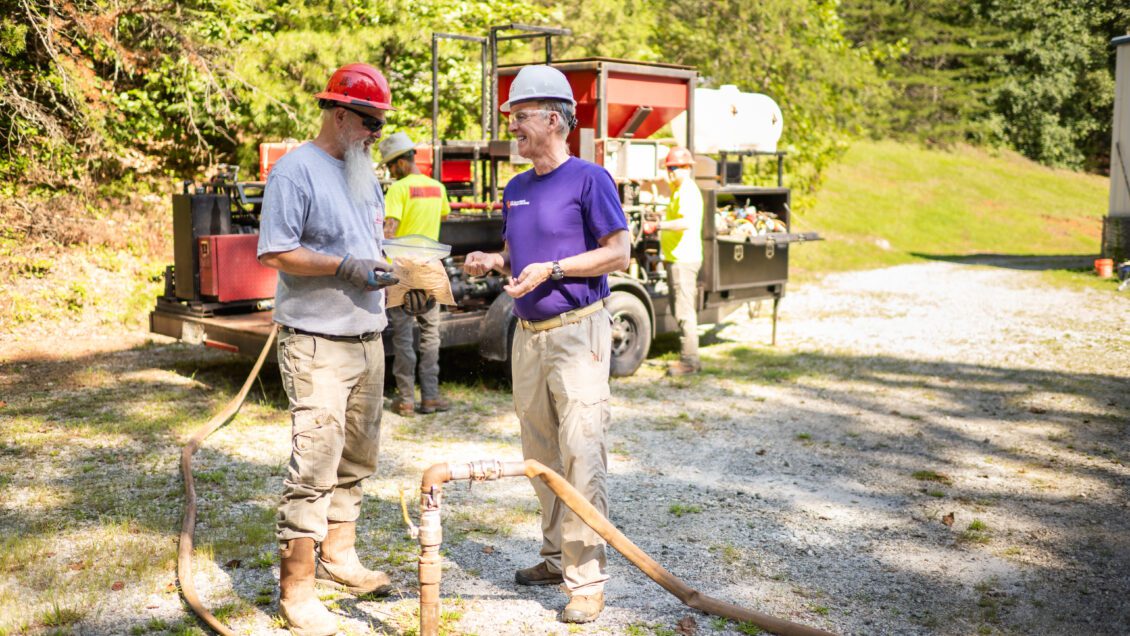Clemson University researchers are proposing a new way to deliver a double-punch to climate change by burying massive amounts of carbon to keep it out of the atmosphere while raising the earth’s surface to protect low-lying areas from encroaching seas.

The carbon would come from wood that is turned into a slurry of particles and injected into the subsurface. The injection process opens new space to store the wood while gradually lifting the ground.
Trees are about 50% carbon, and burying wood prevents it from releasing that carbon back into the atmosphere as it degrades, researchers found
The higher elevation would protect sensitive areas, such as farm fields and wetlands, from saltwater intrusion and help prevent flooding on roads and other infrastructure, researchers said.
“The big takeaway is that we have shown there is an option to store carbon and also raise the ground elevation for flood protection. It’s a technique that would address two pressing problems at once using readily available equipment.” said Larry Murdoch, a Clemson professor of environmental engineering and Earth sciences.
Researchers are calling their technique Carbon SIRGE. The acronym stands for “Solid Injection to Raise Ground Elevation,” and was coined in an earlier paper. The new twist is using SIRGE to store carbon.
The team reported its findings in the journal Environmental Science & Technology. The study continues more than a decade of effort and was a collaboration between researchers in Clemson’s Department of Environmental Engineering and Earth Sciences and FRx Inc., an injection technologies firm co-founded by Murdoch and Bill Slack.
Carbon capture has gained momentum in recent years as the globe scrambles to find new ways of reducing carbon dioxide concentrations to stave off the worst effects of climate change. But conventional carbon-capture methods have proven energy-intensive and expensive.

When captured from a power plant, carbon dioxide needs to be separated from other gasses, transported to a storage site and sequestered underground, typically at least a kilometer below the surface.
Carbon SIRGE could eliminate some of the effort and expense.
Trees would naturally do the hard work of pulling carbon out of the air through photosynthesis, so it wouldn’t be necessary to separate carbon dioxide from other gasses.
The other key step is to prevent the wood from degrading and releasing the carbon. That is accomplished by injecting the wood slurry tens of meters underground where the lack of oxygen prevents the survival of wood-degrading organisms.
The researchers found that only a small fraction of carbon would likely be released from wood buried under anoxic conditions, even on a time scale measuring hundreds or thousands of years, according to published studies they reviewed.
The injection depths are great enough to store the carbon, but much less than the depths needed to store carbon dioxide, and this will help reduce expenses compared to conventional geologic carbon storage, researchers said.
To test their ideas about how Carbon SIRGE would work in practice, researchers obtained wood particles from a sawmill to create a slurry that they injected at a site near Clemson.

In one spot, researchers injected the slurry 35 times over five weeks. In another area, they injected the slurry in nine spots arranged in a 3-by-3 array, each receiving 18-21 injections for a grand total of 182. Then they did computer simulations to better understand details of the injection process.
“The field experiment demonstrates that wood particles can be injected many times at the same location to store carbon and lift the ground surface,” researchers wrote. This was an important proof-of-concept, but a big increase in scale is needed for the technique to have an impact, Murdoch said.
To address how Carbon SIRGE can be scaled up, the researchers examined a variety of factors from how to obtain a sustainable source of wood to what a full-scale design might look like. Using a life-cycle analysis they found that Carbon SIRGE looks considerably better than direct air capture, another way to reduce carbon dioxide concentrations in the atmosphere.
The field experiment showed that SIRGE could lift the ground by 1.5 millimeters per day, researchers found. That rate would lift the ground by half of a meter in one year, which is enough to solve the nuisance flooding problem that plagues many coastal cities from Miami to Mumbai, and it would be a big boost to restoring coastal ecosystems threatened by sea-level rise, researchers said.
Continuing the process for a decade would raise the ground by 5 meters, which could keep land high and dry even in a hurricane storm surge, according to the researchers.
The title of the paper is, “Shallow Geologic Storage of Carbon to Remove Atmospheric CO2 and Reduce Flood Risk.”
The co-authors are: Murdoch, Leonid N. Germanovich, Michael Carbajales-Dale, Robert Moak, Clemence Laffaille, Scott DeWolf and Soheil Roudini. FRx co-authors are Slack and Douglas Knight.
Get in touch and we will connect you with the author or another expert.
Or email us at news@clemson.edu

